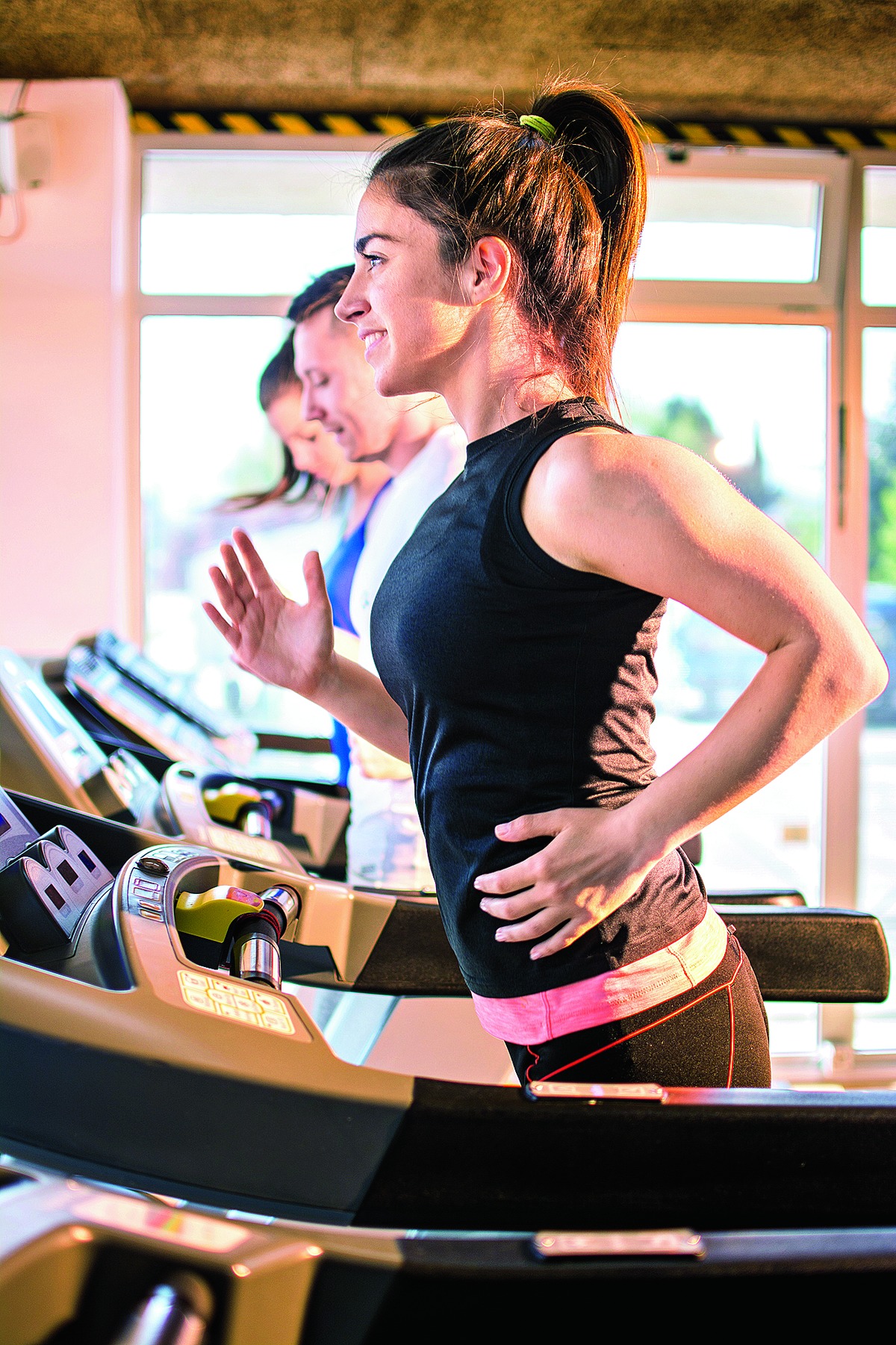
If you are lucky enough to live near a park and are an early riser, go for a brisk walk or jog in the morning. Apart from the joy of Nature, the undulating surface forces you to use a lot of muscles in your legs to maintain balance. This keeps extra stress off your back or knees. Plus, exposure to the sunshine adds a bit of Vitamin D to your bones.
Unfortunately, an early morning jog is out of the question for most of us. And during the monsoons, the rain anyway forces us to stay indoors. But even then, we must find time to walk or jog at least five days a week to keep the heart healthy.
Says Dr Suvro Banerjee, a consultant cardiologist based in Calcutta, "You need to do it [walk or jog] 20-30 minutes every day. However, do not think that you can skip your workout one day and then sweat it out for an hour the next day; regularity is the key."
Brisk walking or jogging also keeps your blood pressure, weight, blood sugar and cholesterol under control. It keeps stress and age-related degeneration at bay. It boosts immunity, mental agility and the strength of bones and muscles, too.
Some people who walk to places and use public transport believe they spend enough calories to justify giving the daily workout a miss. But according to Dr Banerjee, while such daily activities help maintain fitness, they are not enough. "Ideal cardio-pulmonary exercise will make you sweat and slightly breathless (you can barely talk while working out). And this must be continued for at least 20-30 minutes every day," he points out. Much longer than a walk to the market or station.
Exercise machine
This is when working out on a treadmill begins to look good. But doesn't a treadmill ruin your knees and back? "If you keep a few things in mind, it isn't harmful," says Dr Goutam Saha, an orthopaedic specialist. He continues, "Treadmills are equipped with shock absorbers that are supposed to protect your knees and back. It's better than walking on a concrete surface." As soon as you put your heel down, the belt of the machine brings your landed leg behind your body, making the next step easier. As a result, the pressure exerted on the knees and back is little; calorie expenditure is also less. That is another reason why a brisk walk is better.
"If you are over 30, consult a doctor. Get your heart, lungs, blood pressure, knees, back and the structure of your feet checked before you hit the treadmill," says fitness expert Shankar Debnath
• To prevent stress on knees and back, the steps of the treadmill should be broad and cushioned. Check whether the cushion at your gym is in good shape. Regular use tends to erode it
• Learn exercises to strengthen muscles in the hips, stomach and back
• If you have balance issues, exercise to sort them out
• If your foot is flat or high-arched, find the correct shoes
• Get rid of excess kilos before you climb on to a treadmill. Otherwise, your knees and back will be overburdened
• If you are not too fit, it's better to walk briskly instead of running. However, "brisk" is a relative term. The speed that makes you pant today will appear normal in a few days. "Determine your speed based on your capability. Never get influenced by the person running at breakneck speed on the treadmill beside you," says Dr Saha.
• Don't walk or run on the treadmill for a long time or increase your speed suddenly. This can damage muscles and bones
• Walk or run with your back straight. Do not hold on to the handrails. This makes you burn less calories. Besides, this "unnatural" way exerts extra pressure on your knees and back
• You don't have to avoid the treadmill if you have knee or back pain. Talk to a doctor. Working out on the treadmill will eventually reduce the pain.
Shoe shock
Good shoes help absorb shock and cut down pressure on the knees and back. Choose a shoe that has proper cushioning and arch support, the toe-box fits you exactly and the heel is not thicker than half an inch. Depending on whether you plan to walk or run, get branded walking or running shoes. If a shoe gets torn, replace the pair. Ideally, you should discard a pair of shoes after running for about 800 kilometres.
Up a slope
A treadmill gives you the option of running in the plain or inclined (uphill) mode. If you want to burn more calories or are planning to go trekking, select the latter. This gives muscles in your legs, back and hips a workout.
However, researchers at the Ohio State University Medical Center in the US found that running fast on the incline mode can damage your knees. "It's best to go for an incline of about 1-2 per cent if you are old or suffer from pain in the knees," says Dr Saha.
"The treadmill must not be your only way of working out. It doesn't help most muscles in the body. It also doesn't burn too many calories. However, if you use the treadmill sparingly, it won't increase your pain and will be good for blood circulation, the heart and lungs. And if you walk in your normal gait, it can help improve your sense of balance," says Dr Banerjee.
Sounds like a good way to exercise during the monsoons.











